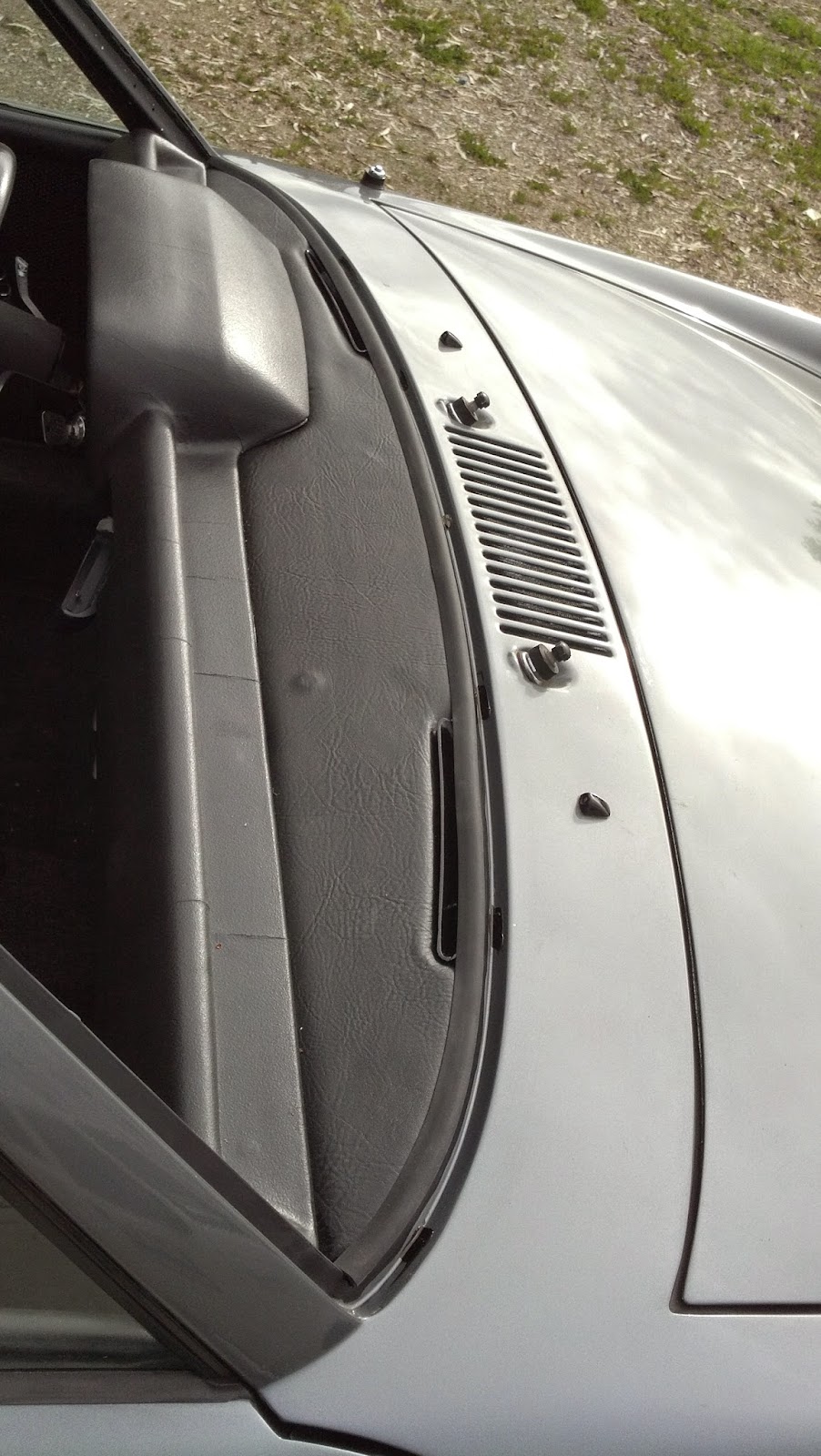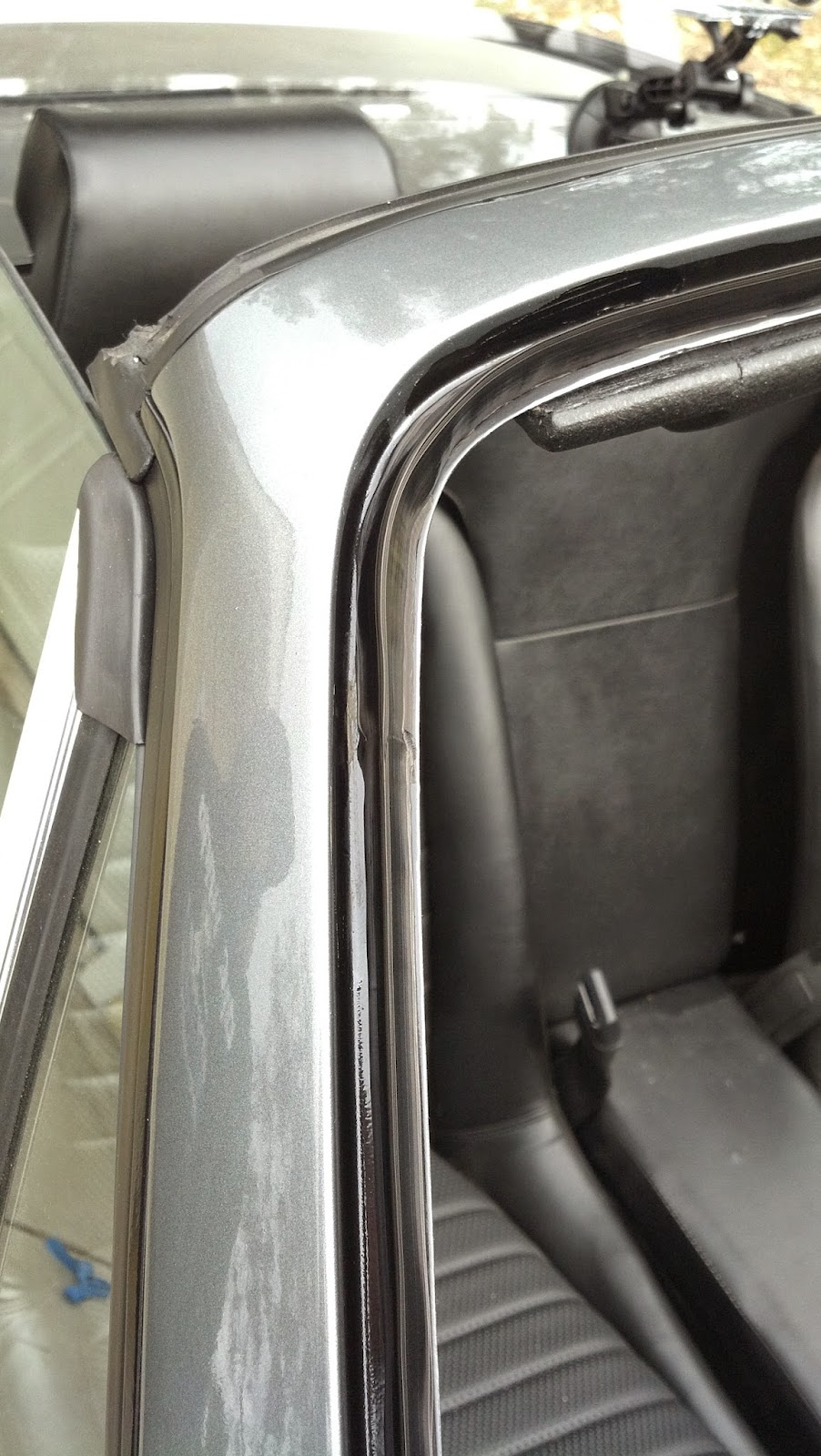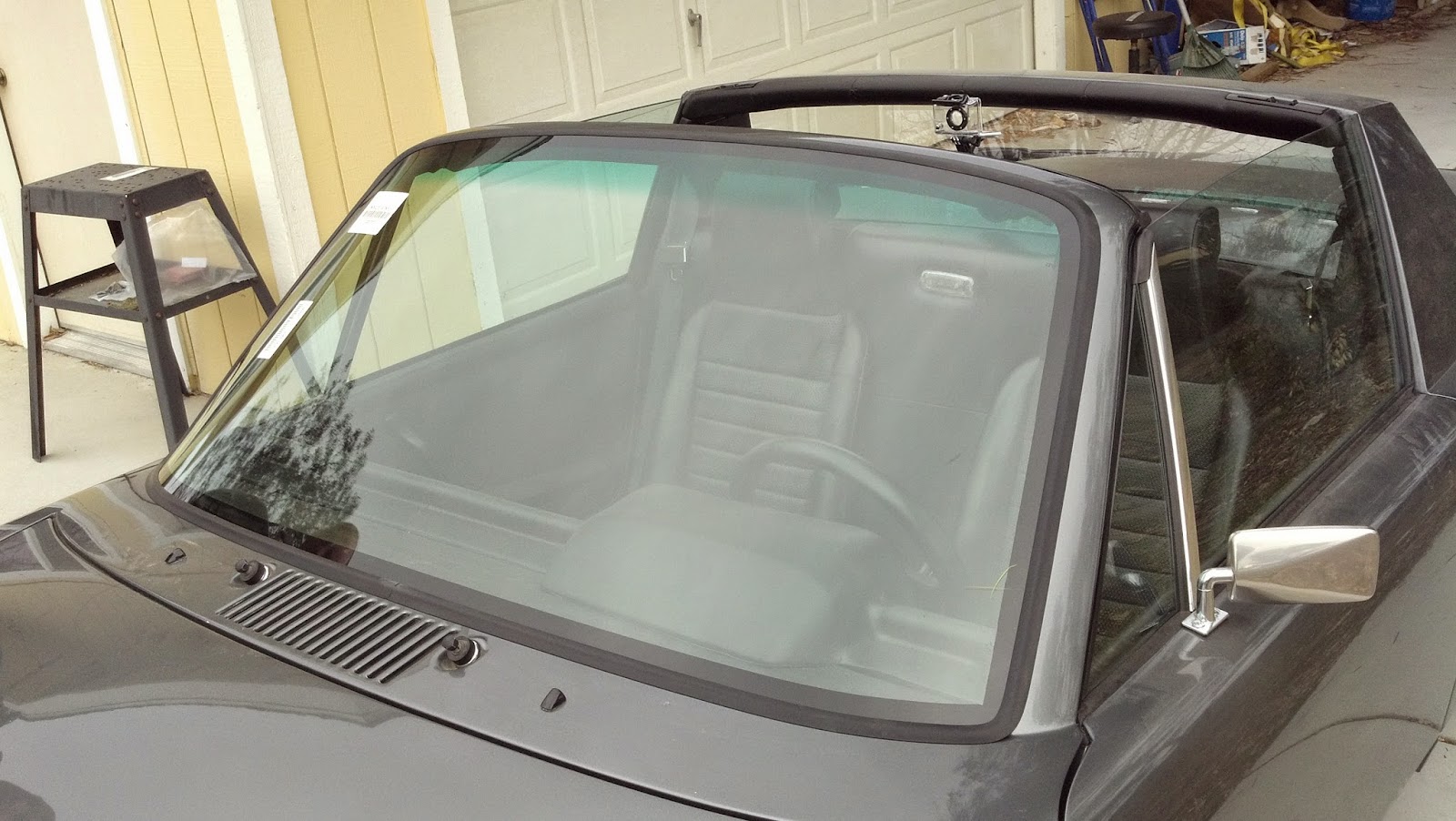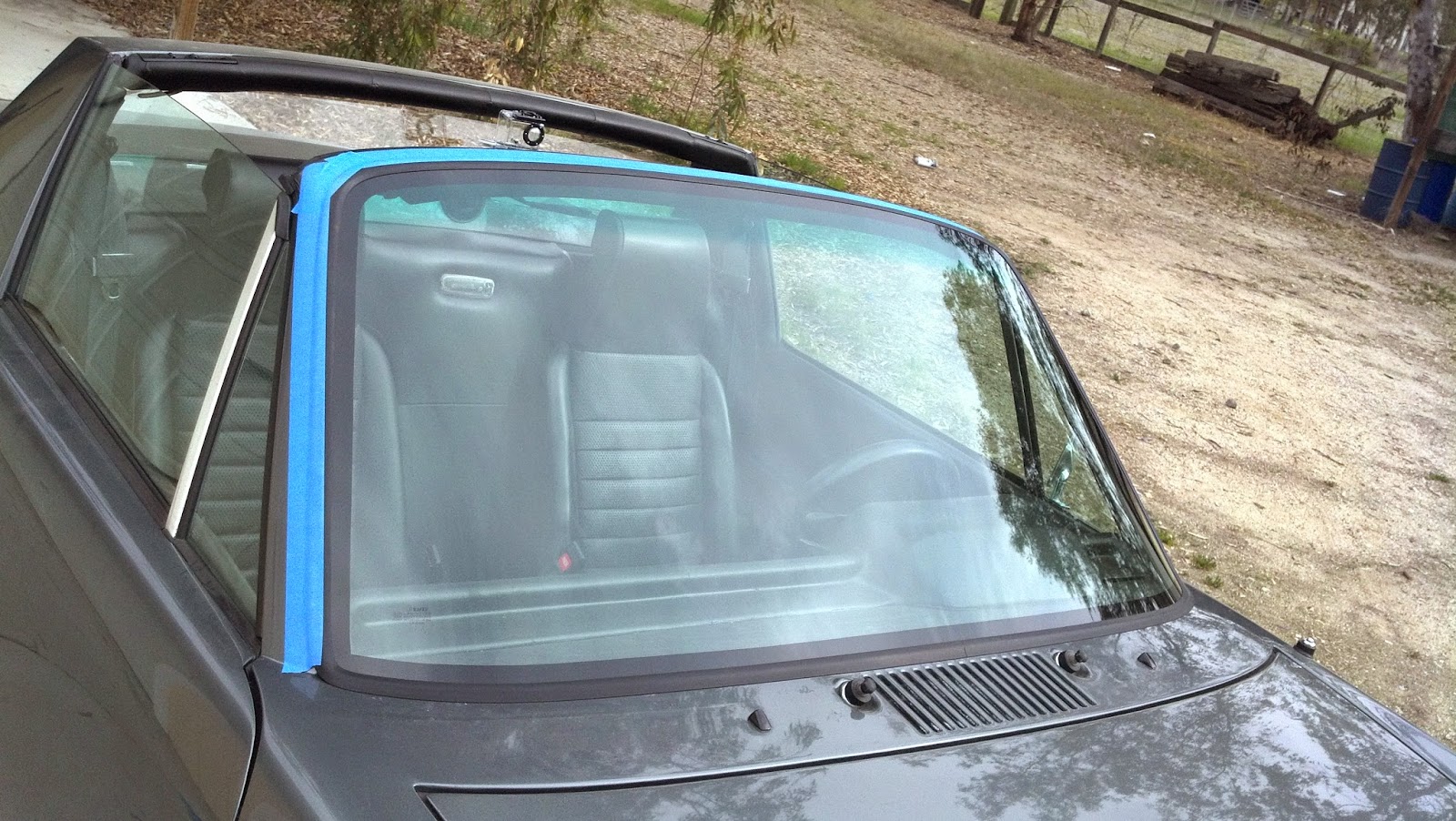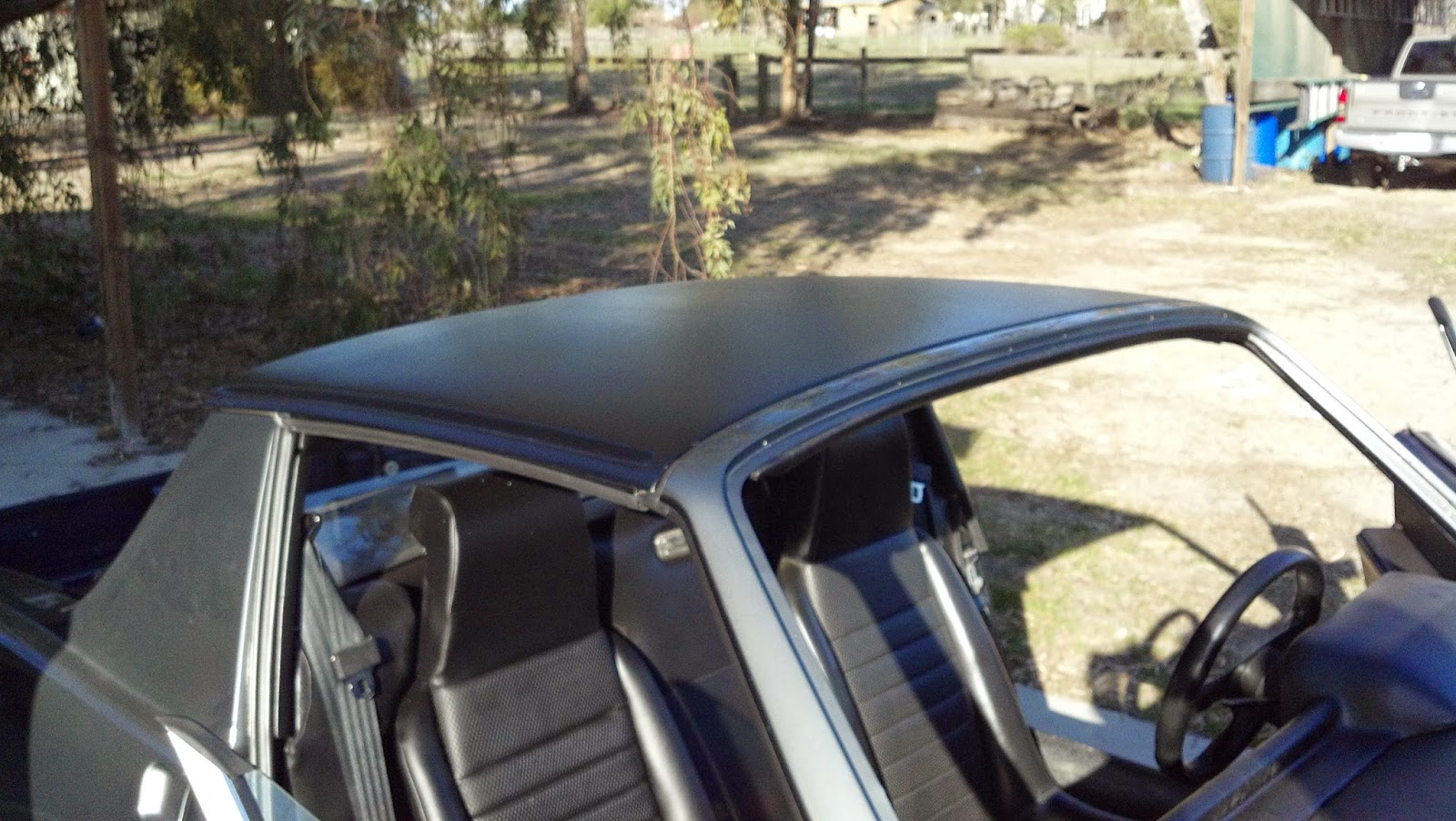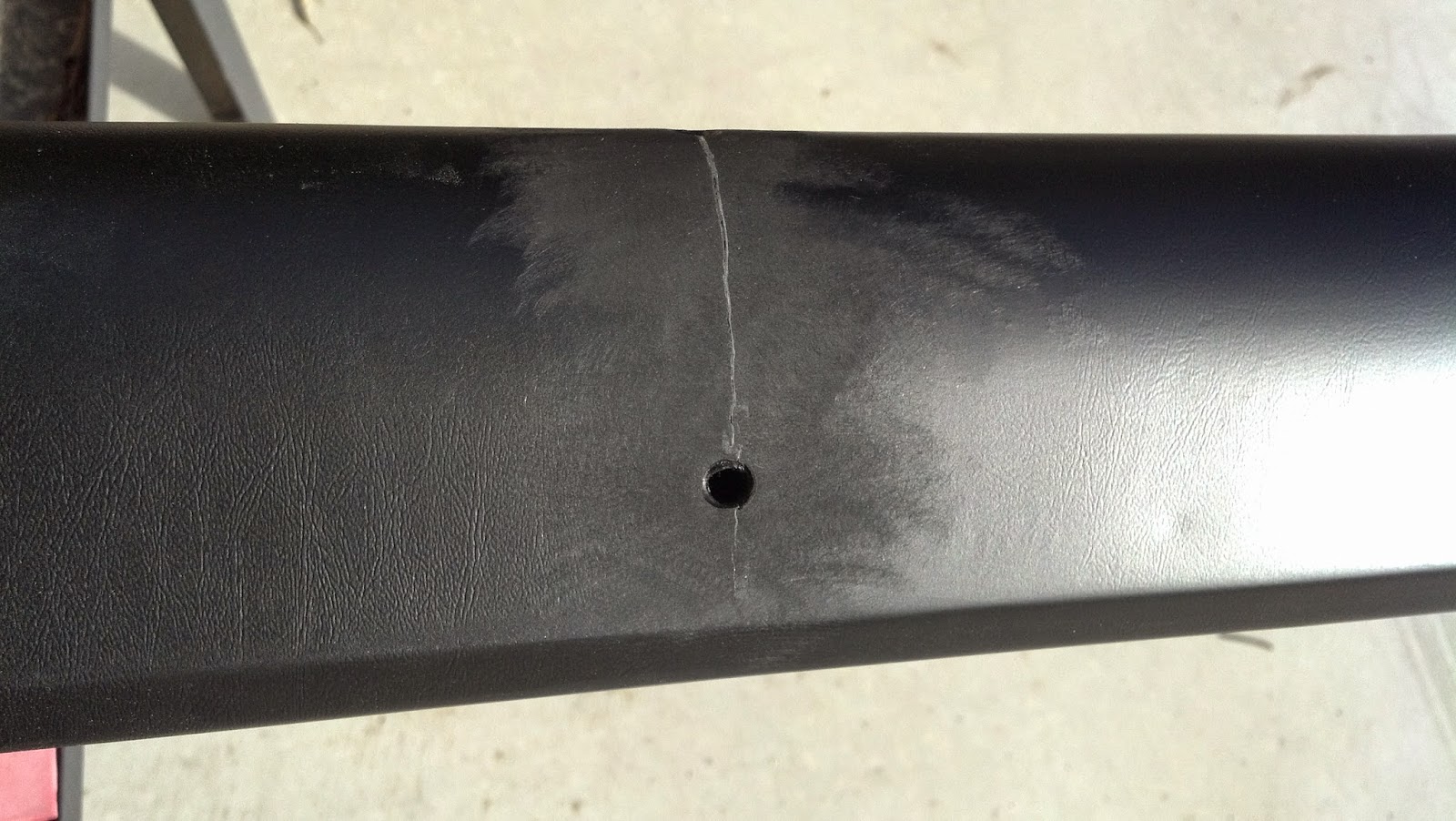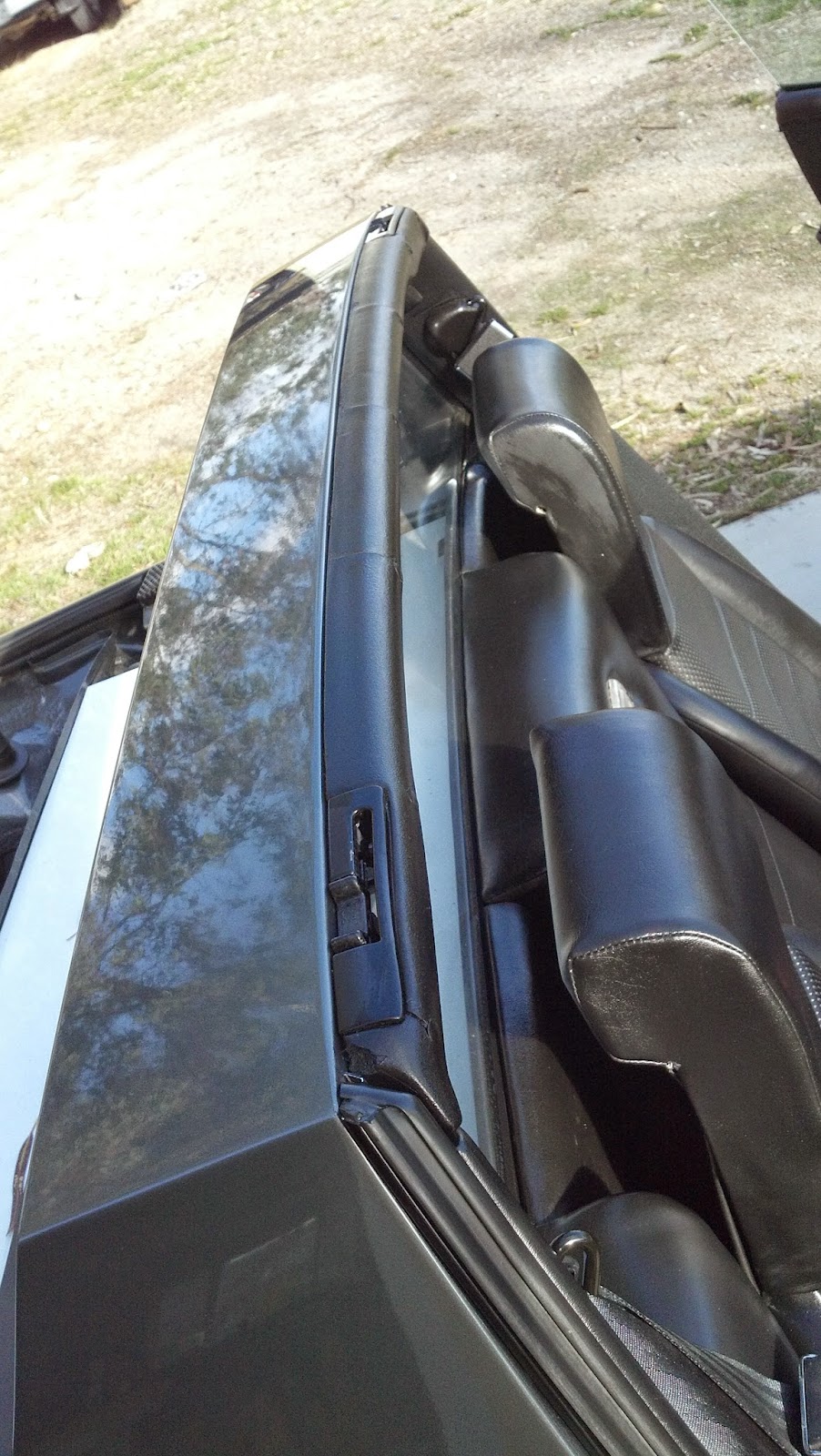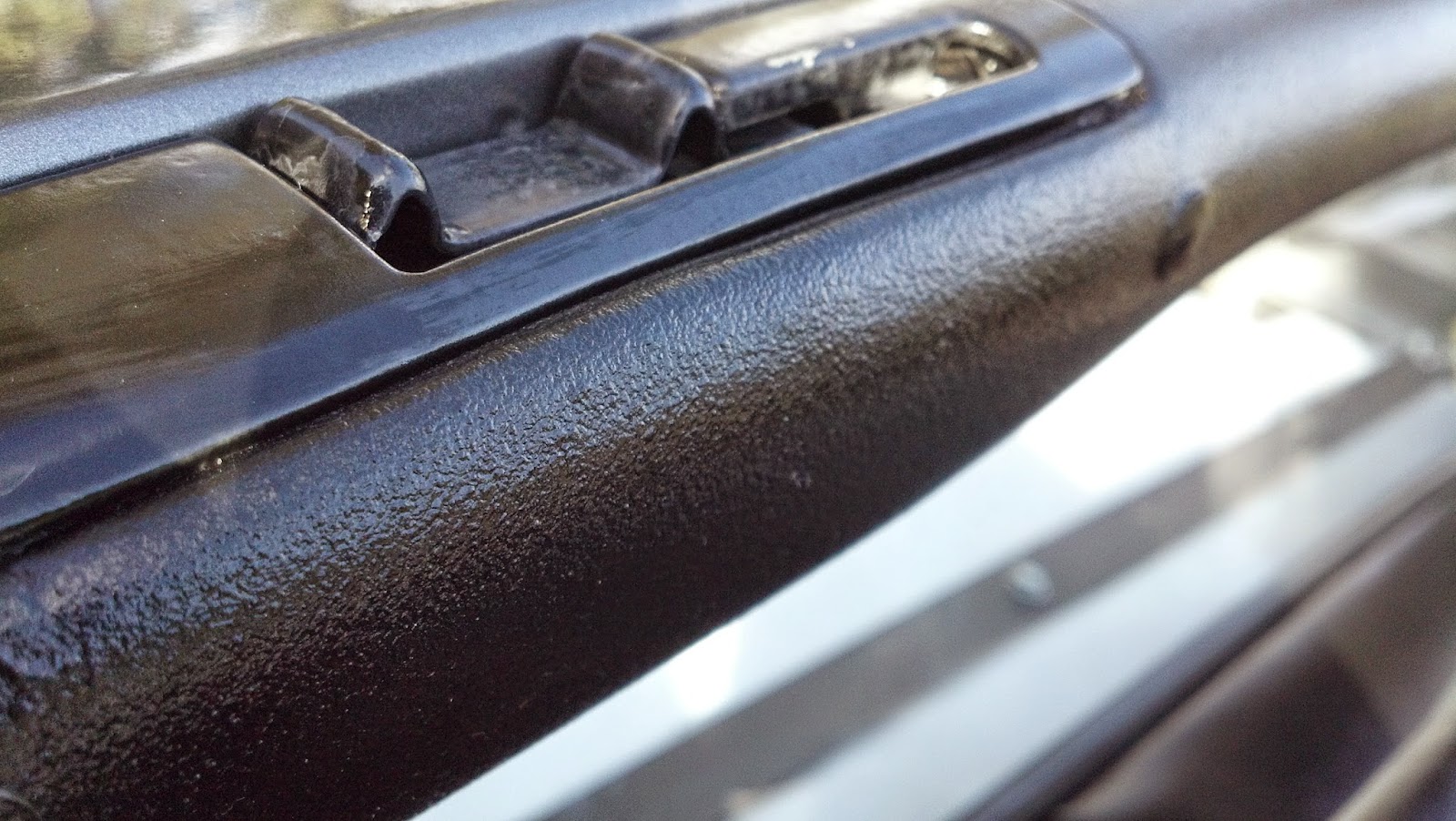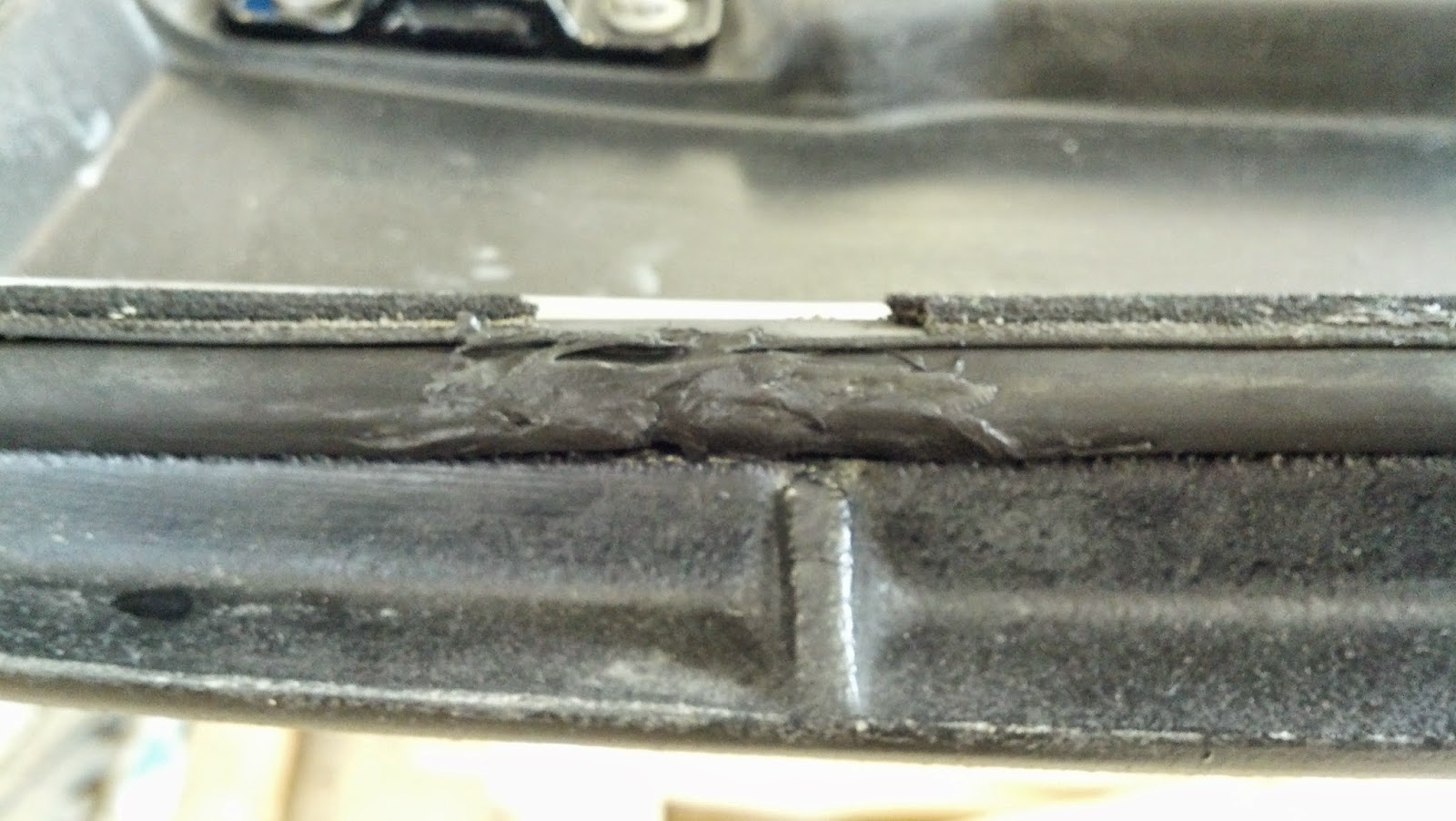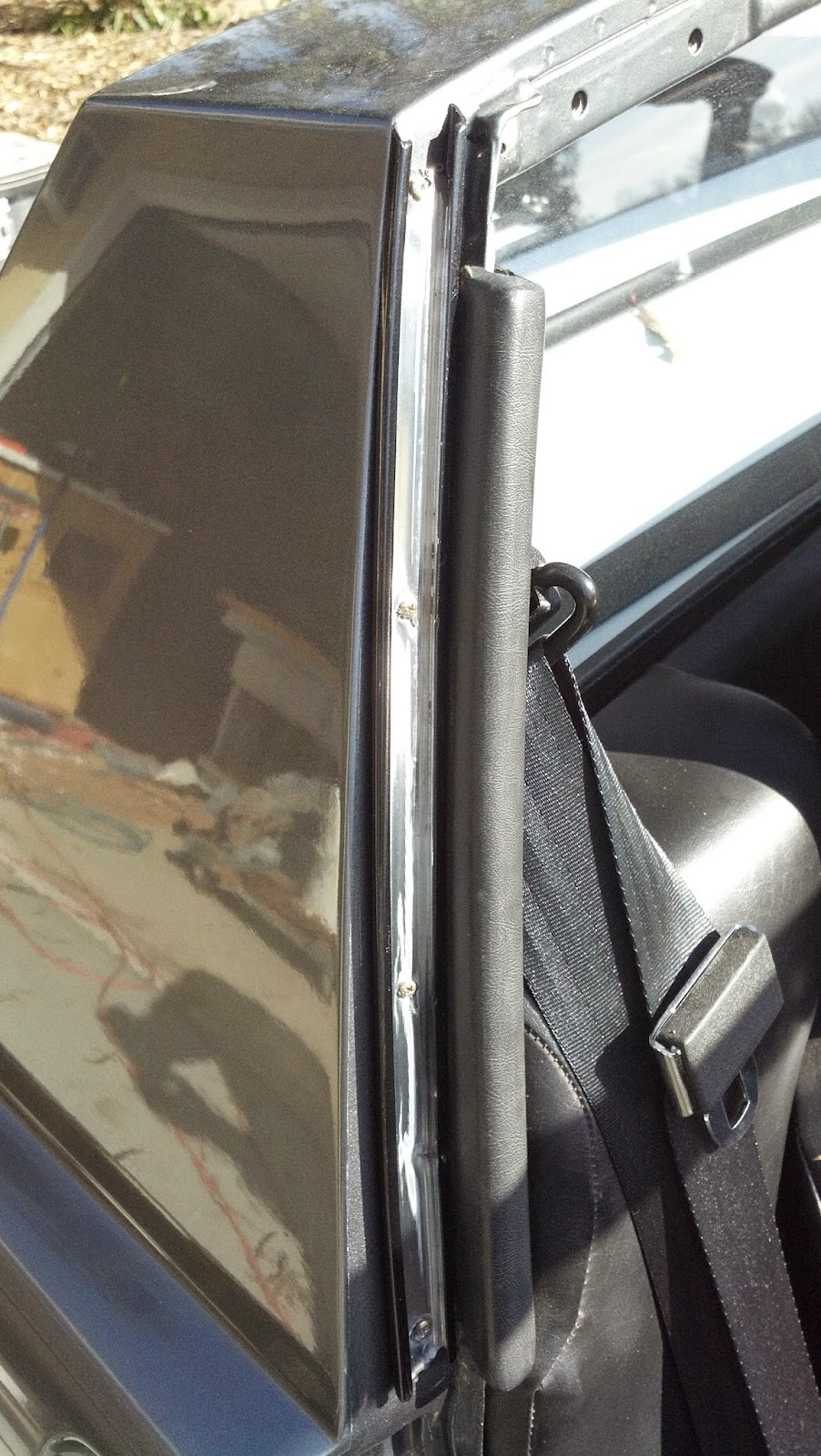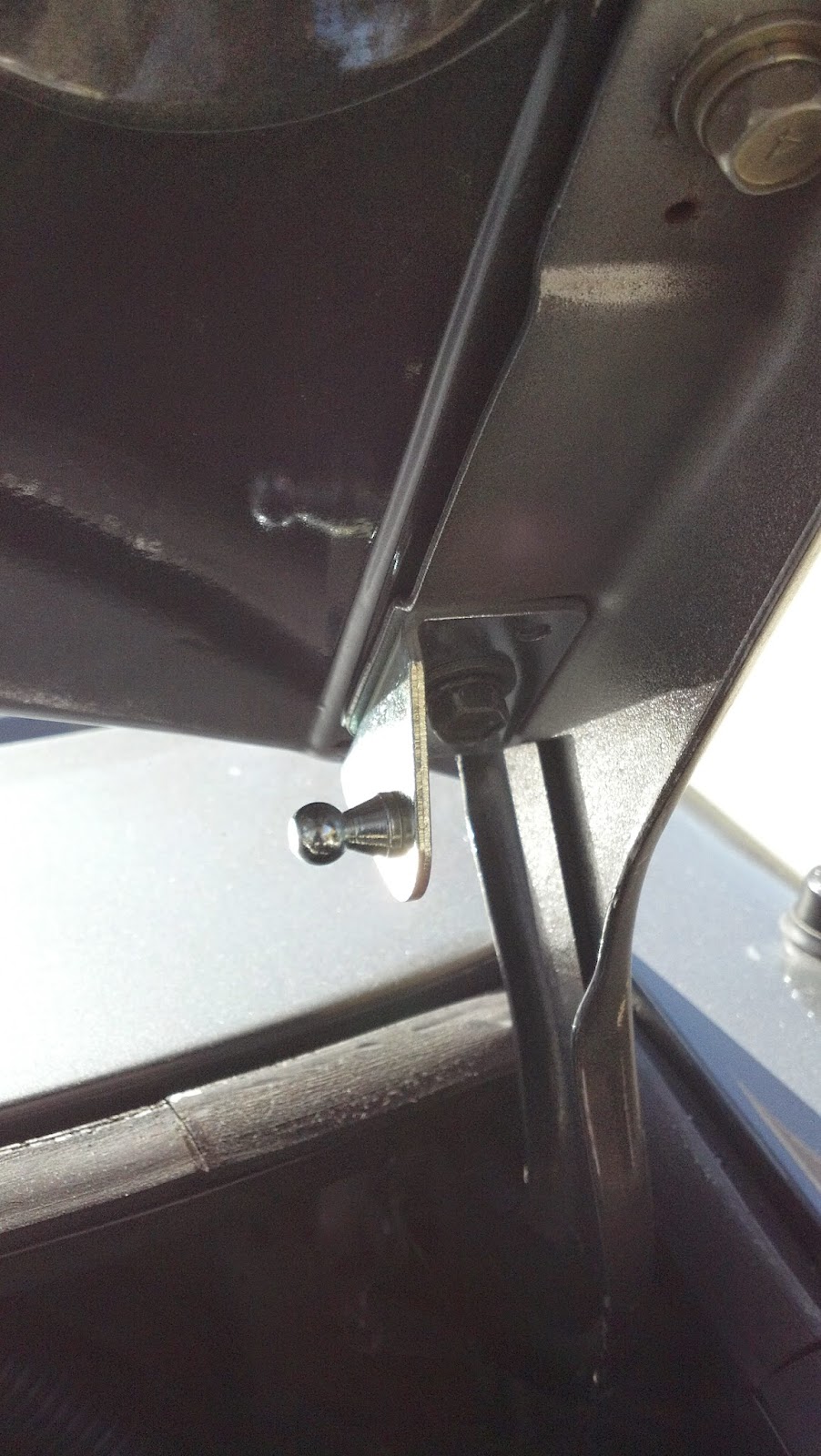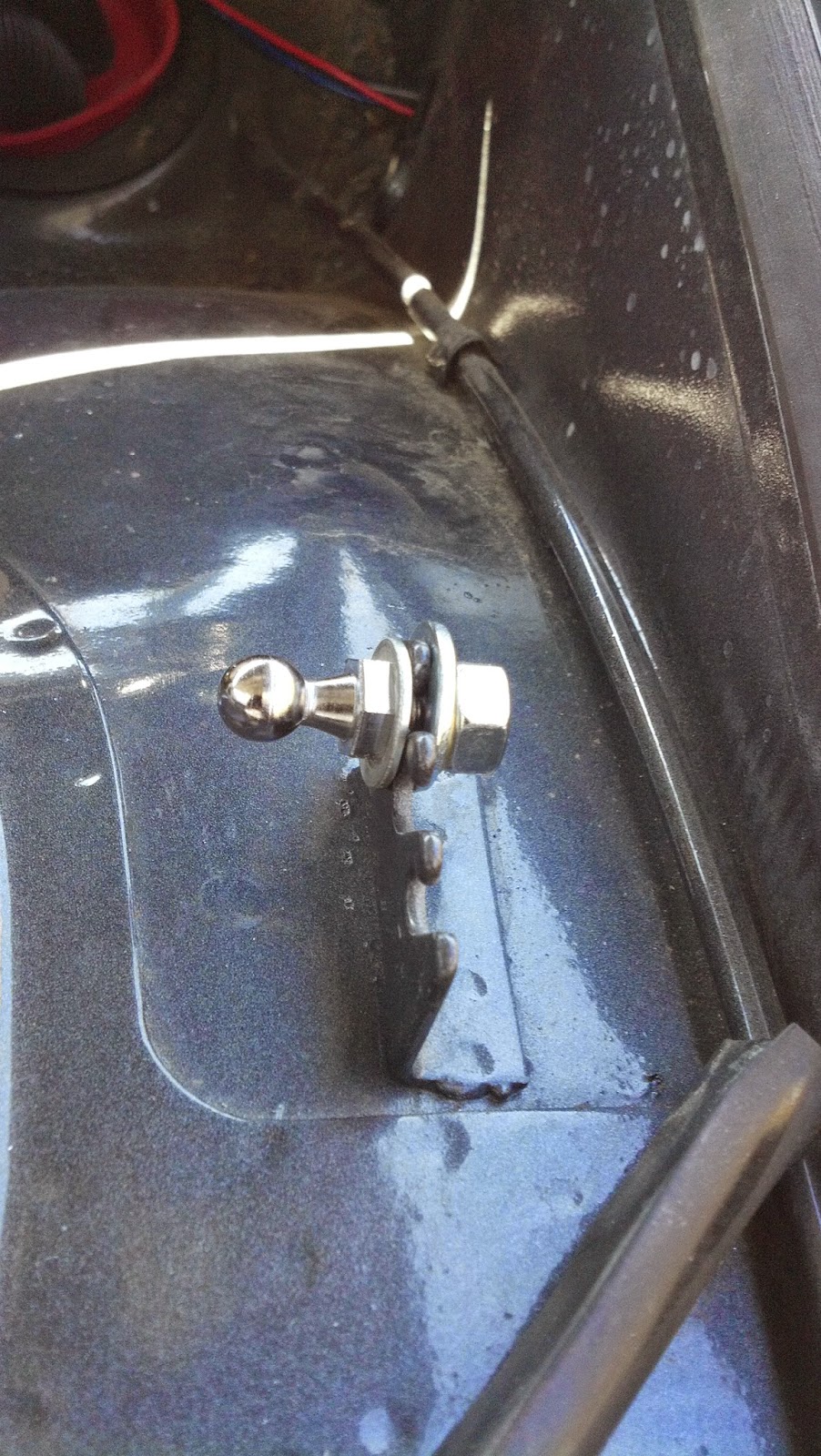The installer started out by testing the gasket on the windshield.
He then painted the edge with a black primer to help with adhesion of the urethane glue and give a nice consistent edge to the viewing area of the glass.
He scuffed the paint around the edge of the window frame and painted it with the black primer.
He filled each of the 19 clip holes with urethane to seal them from water getting in and out.
He pressed the dashboard/windshield gasket into place that I picked up from 914 Rubber.
He applied the gasket to the windshield.
He then ran a bead of urethane adhesive around the edge of the glass.
He ran a matching bead of urethane adhesive around the inside of the window frame.
The shape of the notch in the gun gives the adhesive a tall triangular shape.
The installer and the office manager Scott then placed the glass into place and pressed it down.
It looks great and fits the black motif perfectly.
Painters tape helps the gasket seal down tightly as the adhesive cures.
They offered to take the old windshield off to the glass graveyard. Note the terrible butyl install job done by a previous owner. The crack is my fault during teardown, but it lived a hard life and needed to be replaced.
It's a little cliche' but later in the day, we got a rare rain shower and a huge rainbow popped up over the car and the solar array that makes the electricity that the car gets charged from.




